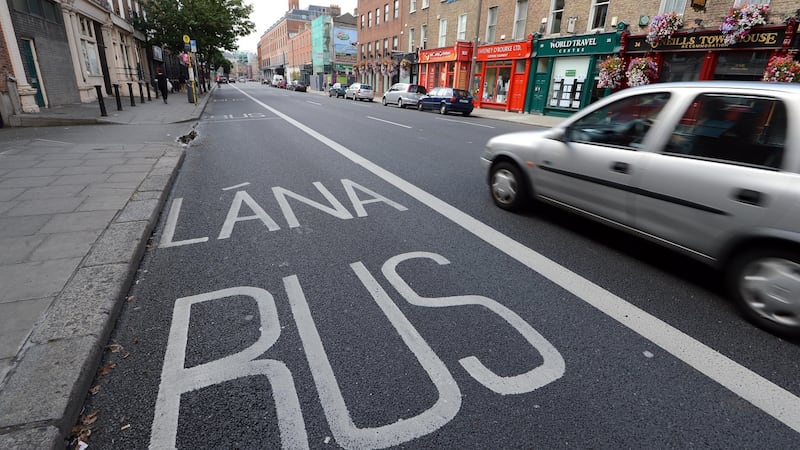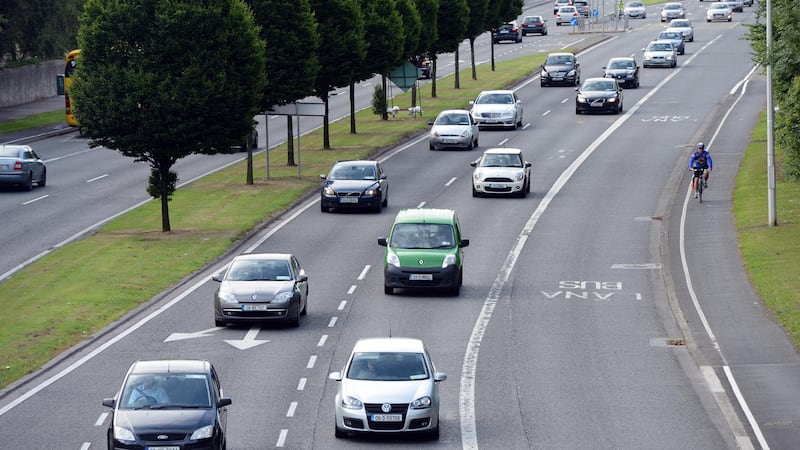For all the continental glamour of Luas trams and the €1 billion or more that’s been invested in providing Dublin with two light-rail lines, the reality is that double-deck buses are the work-horses of public transport in the capital.
Dublin Bus is the largest single public transport provider in the State by far, with 136 million passenger journeys last year making good on its slogan of “serving the entire community”; the equivalent figure for Luas was 37.6 million.
But bus services in Dublin, which are to be privatised in part, have long been the poor relation when it comes to transport investment – at least until now. That’s why the National Transport Authority’s Bus Connects strategy is so significant.
The NTA flagged the idea of creating dedicated bus corridors in the city in 2015, when it published the first draft of its “core bus network”. This has since been worked up to a network of 16 radial routes connecting suburbs with the city centre.
As always with transport plans, the devil is in the detail. And when it was revealed that Bus Connects would involve shaving the front gardens of up to 1,300 houses along the routes, with the loss of on-street parking spaces, the ordure hit the fan.
Just about everybody will be able to beat the congestion by using the bus, rather than a car, to get around
First out of the traps was Noel Rock TD (FG), who strongly criticised the NTA for publishing its plan without having first informed the householders who would be directly affected by it. “This is deeply disappointing [and] unacceptable,” he said.

Others have been more positive about the plan, including Cllr Ciarán Cuffe (Greens), chair of Dublin City Council’s transport committee. However, he stressed that “improvements for pedestrians and cyclists must be integral to the process”.
Cashless fares
When Bus Connects was launched in May 2017, Minister for Transport Shane Ross said it would “transform Dublin’s bus system in a fundamental way”, making it almost synonymous with “speed, punctuality, reliability and convenience”.
Apart from “next generation bus corridors”, including Bus Rapid Transit routes, it would include a bus network redesign, “state-of-the-art” ticketing, cashless fare payment, a simpler fare structure, new bus livery, bus stops and cleaner fuels.
All of these improvements are needed to make travelling by bus more attractive to commuters who currently drive to and from work, adding to ever-growing levels of congestion (especially on the M50) as the economy improves.
According to NTA chief executive Anne Graham, BusConnects would mean that “just about everybody will be able to beat the congestion by using the bus, rather than a car, to get around”, boosting bus passenger numbers by 50 per cent or more.
“This can only happen if measures are put in place to make bus travel more convenient, more reliable and more appealing,” she said, adding that investing in bus transport generally had a “much shorter turnaround time” than rail projects.
Narrowing footpaths
A year has passed since the NTA published its Dublin Area Bus Network Choices report by US consultants Jarrett Walker & Associates, who specialise in designing metropolitan public transport systems; it aims to redesign Dublin’s bus network.
After a round of consultations, the NTA said that responses from the public would “inform the network redesign process” and that the final network review report would be published before the end of last year; it is still awaited, however.
As Graham said, “the current system of bus services in Dublin is complex, with about 130 different bus routes forming the Dublin Bus network [and] is very radially focused, with most routes emanating outwards from the city centre.”

Thus, many bus journeys can only be made by firstly travelling into the centre on one radial route, and then taking another radial bus service out. That is part of the reason why orbital bus routes are now being given to private operator Go-Ahead.
But the main investment in Bus Connects will be on the 16 radial corridors. This will consist of some 230km of expanded bus lanes and 200km of cycle lanes running alongside them, with cyclists separated from bus traffic.
Politicians are unlikely to champion any scheme that runs the risk of alienating even a relatively small number of constituents
Householders along the 16 designated routes are worried about the consequences, which will almost certainly include encroaching on front gardens, narrowing footpaths and felling trees so that roads can be widened to fit the bus corridors.
Perspective is important, however. In the past, entire streets lined with historic buildings – such as Parnell Street and Patrick Street – were demolished to create dual-carriageways catering for general traffic, rather than public transport.
That was in the bad old days, before the road engineers came to realise that the only way to relieve traffic congestion in the city is to improve public transport so that it can provide an attractive and reliable alternative to commuting by car.
But with local elections due next year, politicians are unlikely to champion any scheme that runs the risk of alienating even a relatively small number of constituents. So Bus Connects will take rather longer to implement than the NTA imagines.
Frank McDonald is a former environment editor of The Irish Times











